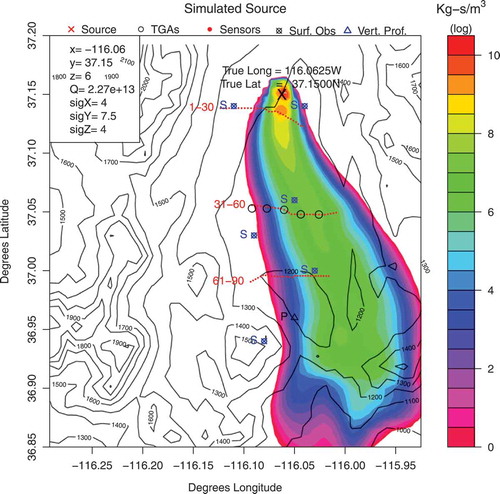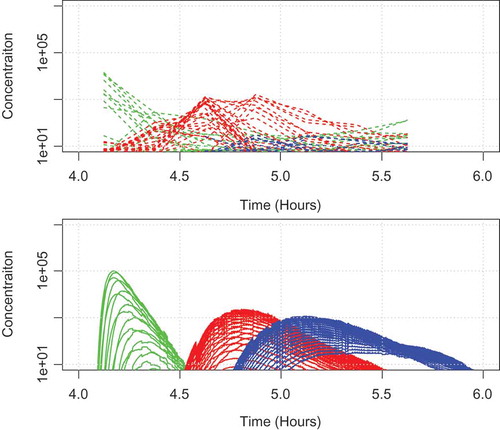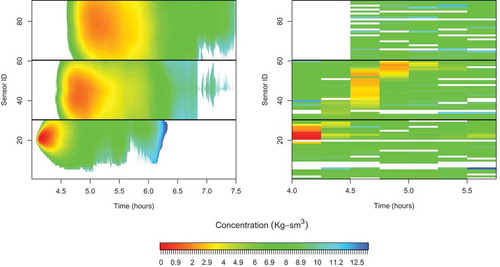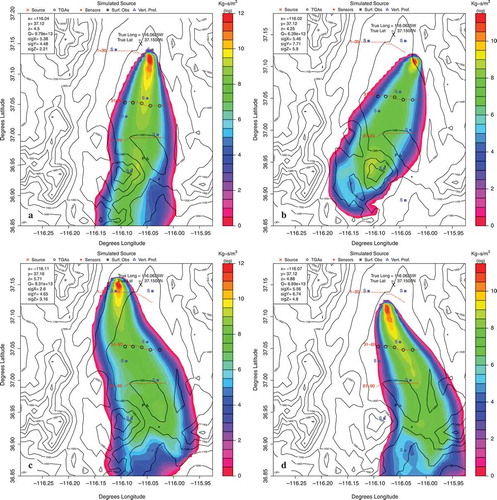Figures & data
Figure 1. Map for the domain of the Dipole Pride experiment. The source location is indicated with an X, along with its longitude and latitude coordinates. Locations for receptors and meteorological measurements (surface and vertical profile) are also indicated.

Figure 2. Baseline SCIPUFF reconstruction of the source using the characteristics measured at the time of the experiments, and all meteorological data available. Sensor locations and meteorological stations (surface + vertical profile) are also shown.

Figure 3. Comparison of observed (top) and simulated (bottom) values for the baseline source reconstruction. Each line indicates a sensor measurement (total 90 sensors), and is color-coded according to the rows. Green color lines indicate the first row of sensors, red lines are for the second row, and blue lines for the third row.

Figure 4. Spread of the released gas as a function of space (vertical axis: location of sensors) and time (horizontal axis: elapsed time in hours) for the baseline simulation (left) and using the field measurements (right). Simulations are run with a 3-second time step, while observations are averages of 15 minutes, explaining the coarser representation of observed measurements.

Figure 5. (a) Best run using the weather station numbers 2 and 5 without vertical profile, (b) Best run using the weather station numbers 5 and 7 without vertical profile, (c) Best run using all the weather station numbers without vertical profile, and (d) Best run using all the weather station numbers including the vertical profile.

Table 1. Average error and standard deviation obtained using different sensor measurements combinations.
Table 2. Error and standard deviation over 30 runs for each experiment.
